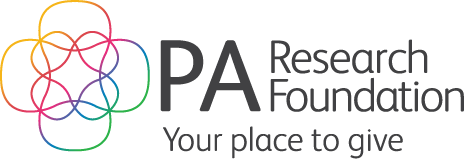When you speak with Dr Stacy Patterson her heart is full of gratitude for the PA Hospital and for the care of neurosurgeon Associate Professor Sarah Olson and neurologist Dr Alex Len.
Stacy was diagnosed with Parkinson’s disease at the just 29 years of age, but thanks to the care of A/Prof Olson and Dr Len she is still working full time, recently got married and is enjoying life to its fullest.

Stacey was working as an obstetrics and gynecology registrar at another Brisbane hospital prior to her diagnosis and has transitioned to working in forensic medicine as a result of her diagnosis. She credits much of her quality of life to deep brain stimulation surgery undertaken by A/Prof Olson in 2021.
Deep brain stimulation surgery involves planting two probes in the brain which are attached to a battery in the patient’s chest. Incredibly the probes can then be controlled via an app by the patient to help control their Parkinson’s tremor.
“I had been seeing my neurologist Dr Alexander Len for a few years and we had been talking about the possibility of deep brain stimulation and he introduced me to Sarah,” she said.
“I met Sarah and I had to ask her if I could keep my hair because it was a deep brain simulation. They usually shave your hair for that. Sarah had never done a DBS operation with keeping or salvaging hair before and she looked at me and just said ‘oh I've always wanted to try that’.
“It was great because I managed to keep most of it, and you could barely tell after my surgery.
“She’s so caring, we have the same favorite color and I remember the day of the surgery she went and got herself a green scrub cap and some green hair ties to put my hair up with, and the surgery went really well.”
The surgery went so well in fact, Stacy was home within two days and said the DBS has helped greatly in reducing two of the symptoms of Parkinsons ever since, firstly and importantly her tremor but also her ability to get a good night’s rest.
“The best part about it was I slept a lot, part of Parkinsons is bad insomnia.
“It's terrible, some people it affects differently but I had really bad insomnia. I would wake up every night around two or three and then never get back to sleep.
“I was functioning on about 3- 4 hours of sleep a day. After the DBS that got to a lot better which was surprising to me because they say it should really only help with motor stress but for me it helps me quite a bit with sleeping. Sometimes I still have to take medications, but it's helped my husband just a lot to the point where I can still work pretty much full time.”
Stacy is now more than two years on from her surgery and recently got married to her husband Jeremy and alongside medication her DBS device works 24 hours a day to help control her Parkinson’s symptoms and give her much needed quality of life.
“I have two probes in my brain, I have one on each side, one that controls the left side of my body is on the right side because the right side of the brain controls the left, my left side is much more affected by my Parkinson's so that one has much more current running through it. The left probe which controls my right side doesn't do much in comparison,” she said.
“The wire from my left side goes under the skull and comes through the right side and then I have the wires down the side of my skull. They then go down inside of my neck and into a battery pack that's inserted in my chest that at some point I'll have to get replaced. They gave me an estimated time of about five years for the battery pack. I can't feel the wires, they're incredibly thin I can only feel where the scar tissue is.”
“It's very cool, I have an app on my phone actually to help control it. Alex and his team they can set it and they can see much more than I can but they give me a range that I can work within and I have a couple of different programs I can switch between but there's one that I just kind of stay on all the time which is the one that works best, and I can up it or put it down as needed.
“I can turn it off and on from my phone and a very cool part about the technology that I have now and a little terrifying is I have a telehealth option on the app, so Alex can make a telehealth appointment with me and he can be he can manipulate the device from anywhere in the world really, anywhere with internet connection, we haven't tried it that is what it's supposed to be able to do.”
You can support more patients like Stacy to benefit from the work of A/Prof Olson by making the PA Research Foundation your place to give here.




